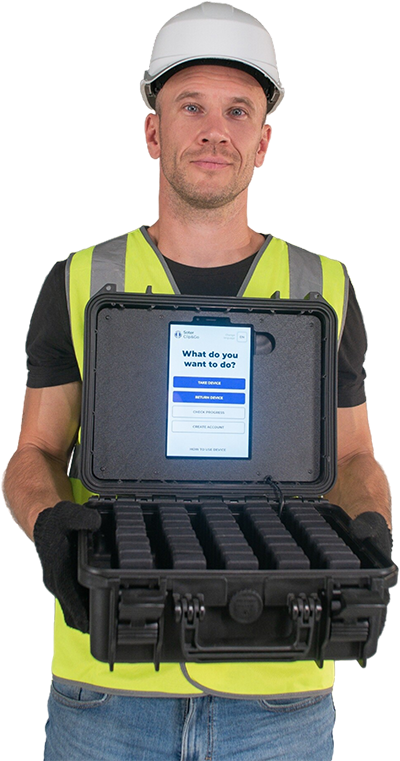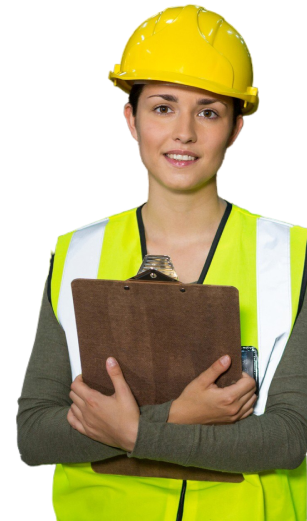Rationale for Tech Standards in Manual Handling Assessments
Technology is moving into different industries and areas of our life. Recently, different technologies have begun being implemented to assist and increase safety at the workplace. The use of wearable technology has opened a new era in ergonomics. Risk assessment nowadays can be performed with the use of technology and technical measurements offer the opportunity to collect accurate data in the workplace with high validity and reliability. Particularly with dynamic work, the variability of tasks and locations, it is best quantified by means of technical measurements.
.jpeg)
Technology is moving into different industries and areas of our life. Recently, different technologies have begun being implemented to assist and increase safety at the workplace. The use of wearable technology has opened a new era in ergonomics. Risk assessment nowadays can be performed with the use of technology and technical measurements offer the opportunity to collect accurate data in the workplace with high validity and reliability. Particularly with dynamic work, the variability of tasks and locations, it is best quantified by means of technical measurements.
It is easy to see that ongoing technical development has led to miniaturization, simplified application, widespread availability, and greatly diminished costs of equipment. Devices that are based on accelerometers and gyroscopes are technical tools that have received a wide application in ergonomics recently. This has increased the feasibility of objectively assessing movements on larger populations during in-situ work settings with minimal effect on workflow, performance and productivity.
One purpose of performing the measurements in ergonomics is risk evaluation, or in simple terms, understanding whether there is anything to “worry about” and if any actions are needed. Usually, use of guidelines allow us to translate exposure variables measured by technical means (quantitative results) to qualitative evaluations, i.e. “low risk of physical complaints, no action is needed”; “a high risk of physical complaints, preventive measures are needed”.
Manual Handling Guidelines and Task Assessment
A lot of manual handling guidelines and task assessment tools were developed for assessing the risk at the workplace: National Institute of Safety & Health (NIOSH) lifting equation, Washington Industrial Safety and Health Act (WISHA) calculator, Rapid Upper Limb Assessment (RULA), Rapid Entire Body Assessment (REBA) to name a few. These guidelines were developed before the technological burst in ergonomics came about and when risk assessment was based on the observation method. The selection of angles in scientific studies and their subsequent inclusion in guidelines date back to the visual observation era. In visual observation, it is easy to divide the straight angle into two or three approximately equal parts. The convention in which the decimal system is used has transformed the measures into expressions of 45°, 30°, 60° or 90°, which are generally assessed with sufficient precision.
It should be noted that the guidelines suggested in the International Organization for Standard (ISO) and European standards (EN) are based on a consensus of experts and that the numeric characteristics of postural angles or time aspects are not set on the basis of epidemiological evidence.
In the observation method, the quality of the collected data depends highly on whether the observed work is clearly visible, and on the observer’s motivation, alertness, education, and experience. The variability both between and within observers in estimates of risk may be substantial. The assessment of highly dynamic or complex activities and activities with frequent changes of location may cause misjudgement, even with video recordings of good quality. Moreover, depending on the observational procedure used, observation can be time-consuming. However, it must be noted that observations do have the advantage that information on the context, e.g. tasks and activities, weight of the load, breaks and factors such as arm support can be included in data collection.
The Observational Method
Despite the variety of manual handling guidelines and task assessment tools for observational methods, no standard procedures and recommendations are currently available for technical measurements.
Imagine, we have measurements from technical tool where we have a bending angle, twisting angle, time in this angle and repetition. Having this measurement, we want to make a qualitative evaluation of it “high risk activity” vs “low risk activity”. Thus, we need a set of thresholds for this. And then we face a problem: guidelines and standards used for observational assessment cannot be completely extrapolated to the technical measurements for a few reasons. First, numeric risk limits in the guidelines are based on less detailed and less accurate measures than those able to be obtained with the use of technical devices. Then, there is a diversity of angles provided in standards as cut off points of a high-risk. Another reason is that observational standards often take into account complex of factors, that can’t be evaluated with tech tools or with certain set of technical tools (e.g. such factors as arm support can’t be detected). And last but not the least, technical tools can measure parameters such as acceleration or velocity, that don’t exist in observational standards (thus threshold for it doesn’t exist in the standards recommendations). It is important to note, that these parameters are still important and can impact the risk of the task.
Assessment of the Musculoskeletal Risk
Existing standards often give an overall assessment of the musculoskeletal risk. However, when performing measurements with technical tools, often certain thresholds for what is dangerous for a specific body part are needed. For example, no consensus exists in the scientific community on which specific arm elevation variables should be selected for the evaluation of expected consequences for health. Limits for arm elevation angles from observational assessment methods range from 20-150°, with the severity of shoulder load growing with increasing angles. None of these limits are validated.
Take the RULA assessment tool as an example: first observer detects positions of hands, the forearms, trunk, legs, head and then there is an overall score that says dangerous-need change, or ok-don’t need change. What is usually needed for technical tools however is a cut-off point “dangerous” vs “safe” for each specific body part. When we try to define it based on observational tools, we find different numbers there.
The New Tech Standard
Since numeric risk limits in the guidelines are based on less detailed and less accurate measures than those obtained with the use of technical devices, the figures stated in standards should, therefore, be interpreted with care, and not used directly as strict cut-off-points for decisions based on technical measurements. Taking the above into account, it is not always possible to use figures stated in standards directly as strict cut-off-points for decisions based on technical measurements. On the other hand, no standards at all exist in terms of such parameters as velocity, acceleration etc.
Thus, practical guidance on technical measurements is needed. Besides, standards developed based on epidemiological data will help in understanding the exposure-outcome relation and interpreting the measurement result of technical tools in a universal way. Observational methods can be used as a supplement to technical measurements and assist in providing contextual information facilitating interpretation.
With advances in safety technology, the development of a task assessment tool combining the accuracy of technical measurements of an accelerometer and gyroscope with additional information received by observation is a necessary solution to assist in measurements of hazardous movements. Continuous usage of such a product will enable the development of universal technical standards that will be based on epidemiological evidence and can then be matched with the existing task assessment tools. Combining these two methods and building standards based on this will create a powerful accurate discipline for musculoskeletal safety.
Originally published at The Ergonomist on October, 2020.
About Soter Analytics
Soter Analytics is a global safety science company producing AI-supported wearable solutions that reduce the risk of ergonomic injuries in the workplace. Soter wearables are widely used in logistics, manufacturing, healthcare and other industries, helping leading companies to prevent up to 55% of back & shoulder musculoskeletal injuries.
To see how Soter Analytics can help you improve safety behaviour, engage employees to self-manage their training and prevent workplace ergonomic injuries, simply Book a FREE Demo today.
References
Armstrong, T.J., P. Buckle, L.J. Fine, M. Hagberg, B. Jonsson, Å. Kilbom, I.A.A. Kuorinka, B. Silverstein, G. Sjøgaard, and E.R.A. Viikari-Juntura, A conceptual model for work-related neck and upper-limb musculoskeletal disorders. Scand J Work Environ Health, 1993. 19(2): p. 73- 84.
Kumar, S., Theories of musculoskeletal injury causation. Ergonomics, 2001. 44(1): p. 17-47.
Cole, M & Grimshaw, P. Low back pain and lifting- a review of epidemiology and aetiology. Work. 2003; 21, 2: 173-184
Bazrgari B, Hendershot B, Muslim K, Toosizadeh N, Nussbaum MA, Madigan ML. Disturbance and recovery of trunk mechanical and neuromuscular behaviours following prolonged trunk flexion: influences of duration and external load on creep-induced effects. Ergonomics. 2011 Nov; 54(11):1043-52
EN 1005-4-2005, Safety of machinery — Human physical performance — Part 4: Evaluation of working postures and movements in relation to machinery, British standards, 2005.
Visser, B. and J.H. van Dieën, Pathophysiology of upper extremity muscle disorders. J Electromyogr Kinesiol, 2006. 16(1): p. 1-16.


